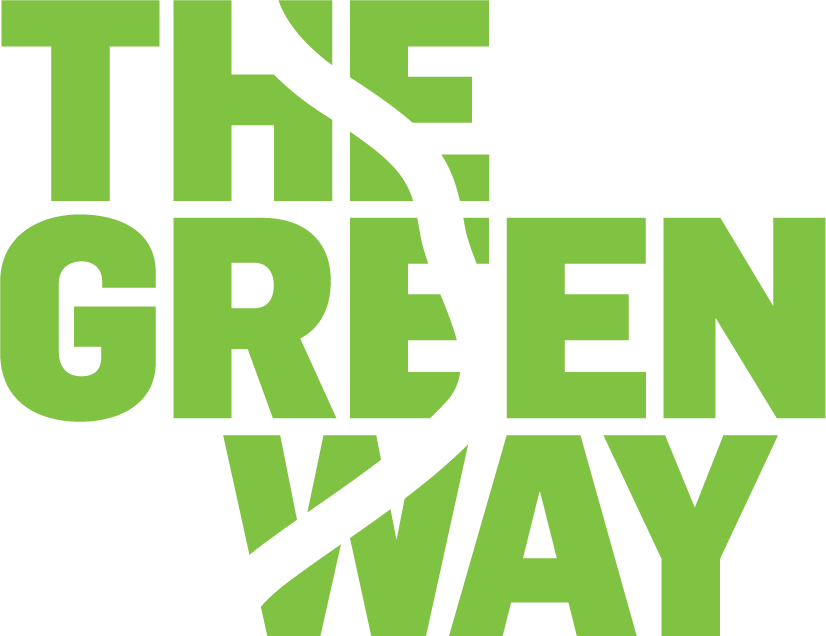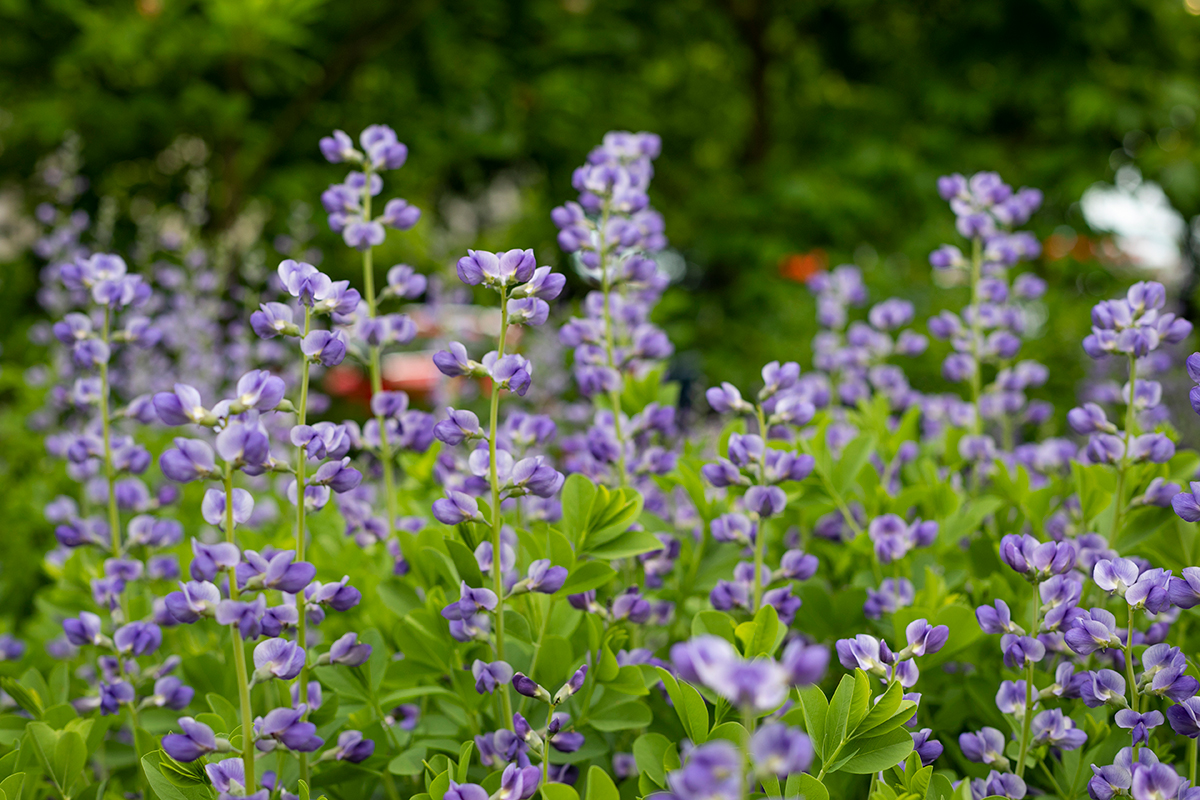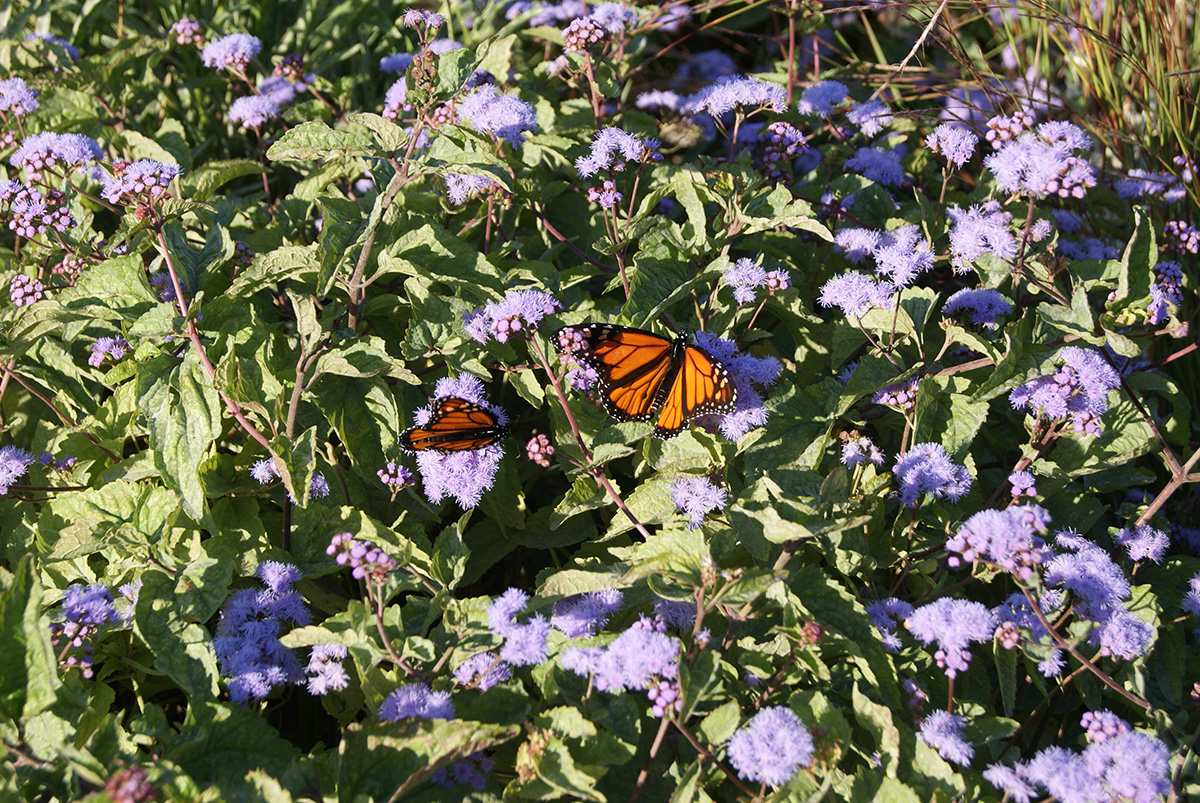
Here at The Greenway, we’re proud to curate vibrant, climate-resilient landscapes that support native pollinators in the heart of downtown Boston—from Chinatown to the North End. Our public gardens are more than beautiful—they’re living ecosystems built to thrive in tricky urban conditions while providing food, shelter, and habitat for bees, butterflies, birds, and more.
Now, we want to help you bring that same magic home.
Whether you have a small patio or a sunny patch of yard, you can create your very own pollinator garden using the same principles we follow on The Greenway. With guidance from our Horticulture team (and a few of Ecology and Horticulture Supervisor Tori Hiney’s top native plant picks), this step-by-step guide will help your family build a pollinator paradise that’s drought-tolerant, heat-hardy, and city-smart—just like ours.
Step 1: Pick Your Pollinator Spot
In-Ground Garden Bed:
- Take stock of your sun and shade conditions–there are native pollinator plants that can do well in either!
- Remove existing grass or weeds and loosen the soil to improve drainage.
- Add compost if the soil is compacted—this is especially common in Boston’s older neighborhoods.
OR Container Garden (Patio, Balcony, or Sidewalk Strip):
- Use large containers with drainage holes.
- Fill your containers with high-quality potting mix.
- Cluster containers together to help pollinators move easily between plants.
Greenway Tip: Urban gardens can be surprisingly rich habitats—even a few containers can make a real difference for your local pollinators.
Step 2: Choose Resilient, Native Plants
Here on The Greenway, we focus on native species that provide real ecological value—and stand up to urban conditions like heat, wind, compacted soil, and drought. Our Horticulture Supervisor, Tori Hiney, recommends these standout performers:
Tori’s Top Pollinator Picks for Boston Gardens
Butterfly Weed (Asclepias tuberosa)
- Hosts monarch caterpillars and feeds hummingbirds, native bees, and more.
Foamflower (Tiarella cordifolia)
- A spring bloomer that supports bees, butterflies, and hoverflies. Great for shadier areas.
Rattlesnake Master (Eryngium yuccifolium)
- A true MVP. It’s heat-tolerant, drought-tough, and a favorite for a wide variety of pollinators.
❤️ Red Columbine (Aquilegia canadensis)
- Loved by hummingbirds and the columbine duskywing butterfly. Great early-season color.
Foxglove Beardtongue (Penstemon digitalis)
- Think of this as native bee HQ—an important early nectar and pollen source.
Prairie Dropseed (Sporobolus heterolepis)
- A graceful native grass that provides nesting cover for ground-dwelling pollinators.
Mix these in with other Boston-hardy natives like Purple Coneflower, Bee Balm, and New England Aster for a full-season bloom buffet.
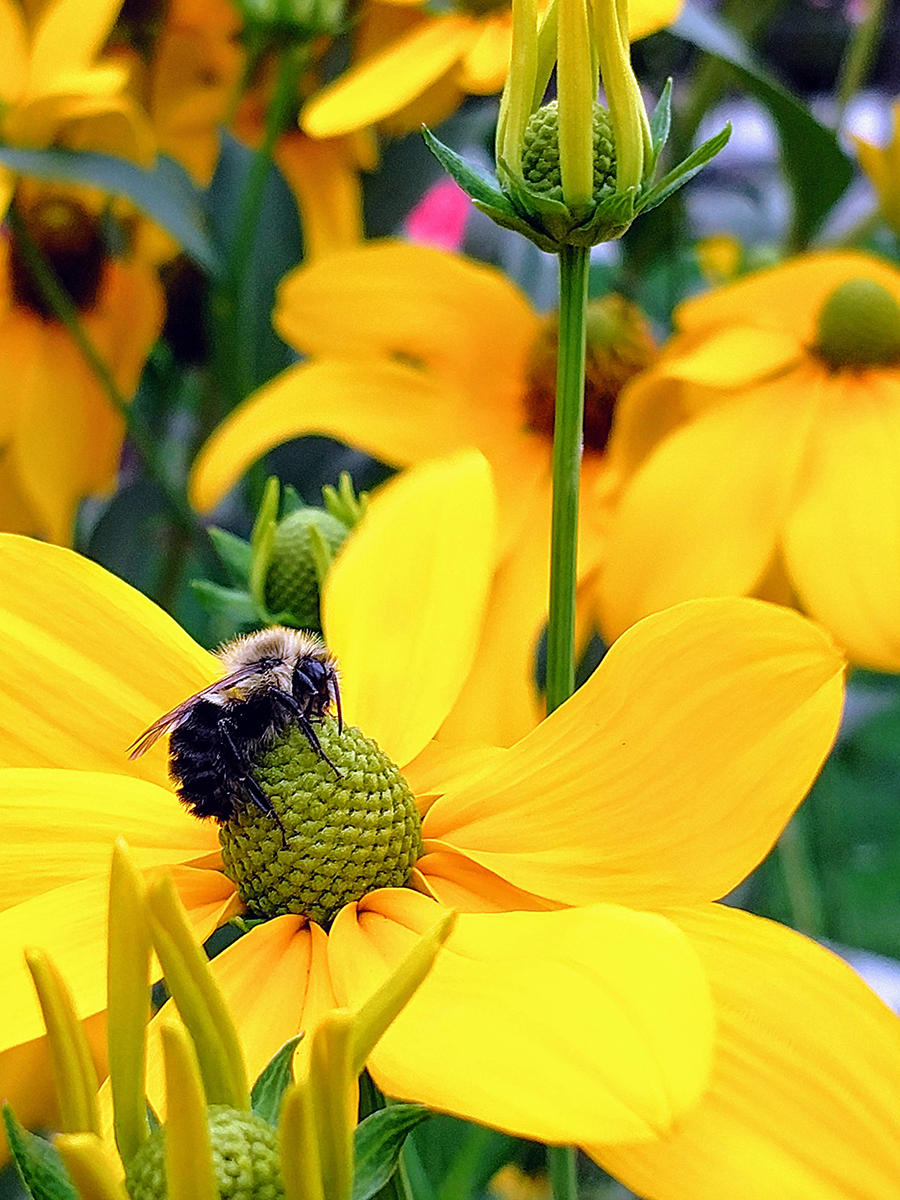
Step 3: Plant for Pollinators
- Group plants in clusters of 3 or more for better visibility and access.
- Aim for bloom succession—something flowering from spring to fall.
- Water well after planting. For in-ground beds, densely plant groundcovers or let leaf litter remain to help retain moisture and suppress weeds—no mulch needed.
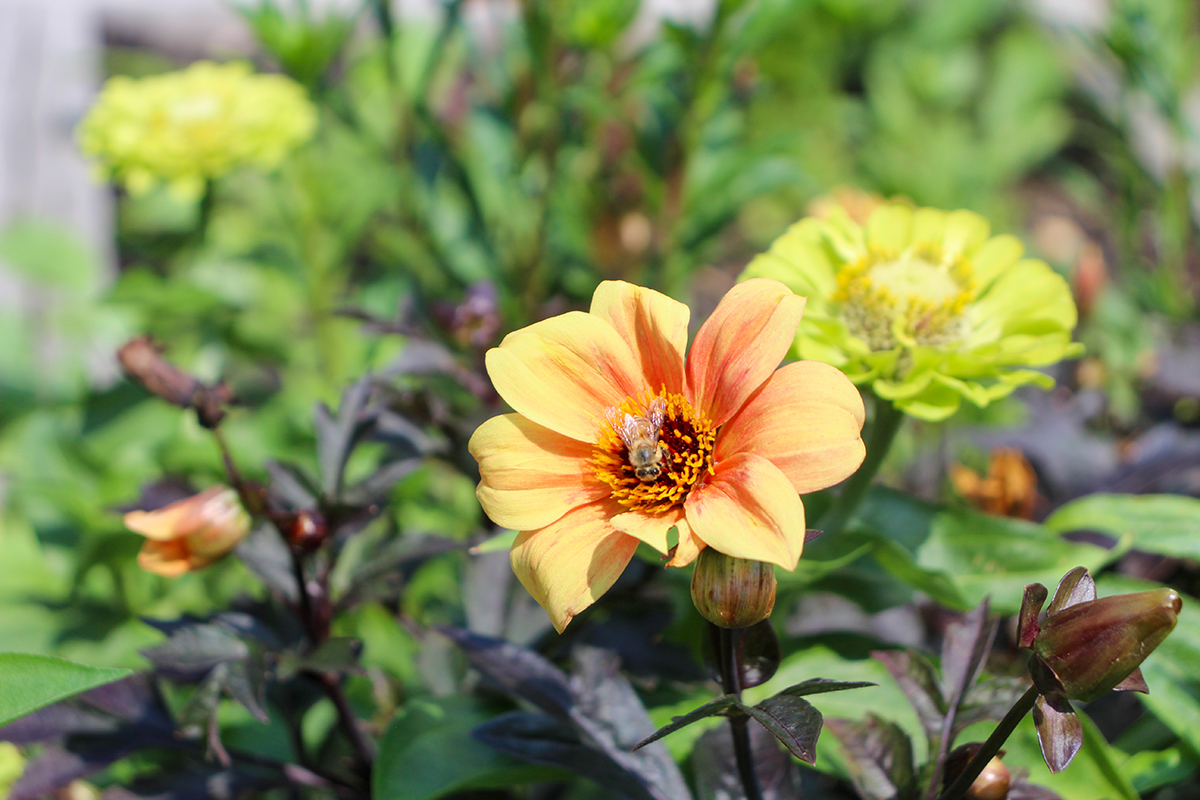
Step 4: Maintain with Nature in Mind
Watering:
- Water deeply once or twice a week during dry spells.
- Early mornings are best to reduce evaporation and avoid plant stress.
Other Maintenance:
- Deadhead with care, consider allowing your blooms to go to seed, the birds will thank you!
- Skip pesticides—they harm the very pollinators you’re inviting in.
- Leave plant stems and leaf litter over winter for native bee nesting and protection.
Greenway Tip: Caterpillars and native bees often need shelter too. Don’t “over-clean” your garden!
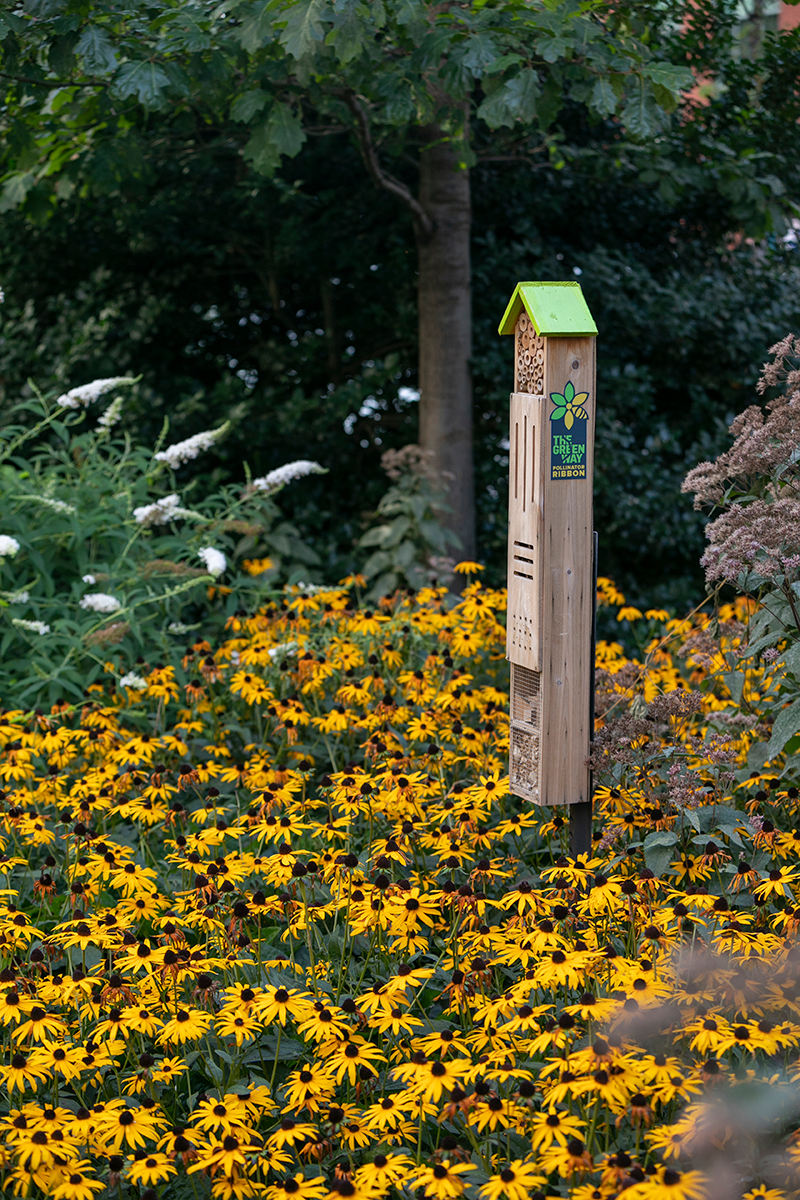
Step 5: Add Habitat Features
Pollinator gardens are more than flowers. Here’s how to make yours a true refuge:
- Provide shallow water (like a dish with pebbles).
- Leave some bare soil for ground-nesting bees.
- Add a log or small brush pile for shelter.
- Avoid using landscape fabric—it blocks access for soil dwellers.
Where to Find Native Plants Near Boston
- Native Plant Trust (Framingham)
- Massachusetts Horticultural Society (Wellesley)
- City Natives (Mattapan) – an urban nursery specializing in native species
- Local plant sales hosted by Mass Audubon and other conservation groups
Bonus: Local Resources for Boston-Area Families
Looking to learn more, shop for native plants, or get your kids involved in pollinator-friendly gardening? Here are some of our favorite local organizations and programs that can help you grow your garden—and your knowledge.
Native Plant Trust (Framingham, MA)
- A go-to source for native plants, seeds, and expert guidance. They offer workshops, plant sales, and conservation-focused family events.
www.nativeplanttrust.org
Mass Audubon
- Offers pollinator education, kids’ nature programs, and backyard habitat guidance across multiple locations in Greater Boston.
www.massaudubon.org
Boston Natural Areas Network (BNAN) via The Trustees
- Supports urban gardening, especially through community gardens in Boston. They often host family-friendly workshops and plant giveaways.
www.thetrustees.org
City Natives (Mattapan)
- An urban native plant nursery run by BNAN that specializes in Boston-tough plants perfect for pollinator gardens.
https://shopthetrustees.org/
Greenovate Boston
- A City of Boston initiative promoting sustainability. Offers tips for climate-smart gardening and city greening projects.
boston.gov/departments/environment/greenovate-boston
Final Thoughts from The Greenway
Creating your own pollinator garden is an amazing chance to connect with the ecosystems all around us—right outside your door. It’s also a great family activity that helps your kids understand the important role of biodiversity in our cities.
At the Rose Kennedy Greenway, we’ve seen how native gardens can transform a public park. Imagine what they can do for your home, street, or neighborhood.
Let’s green Boston, one garden at a time.
Want more inspiration? Visit the Greenway’s pollinator gardens and see these native plants in action! Tag us in your garden photos @RoseKennedyGreenway.
